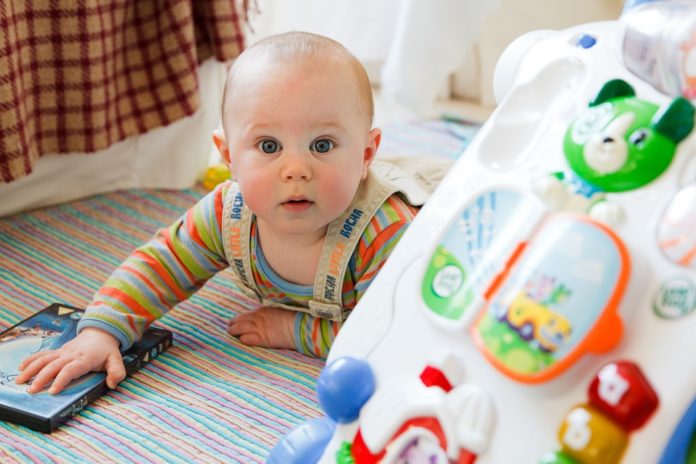Expressing emotions is the primary tool accessible to babies for speaking with people around them. Babies express their feelings through their posture, voice and facial expressions from birth. These attitudes enable their carers to adjust their conduct to the child’s emotional state.
According to a new study by the UNIGE scientists, babies develop the ability to differentiate emotional expressions during their initial 6 months. To understand the fact more, scientists quantified the ability of six-month-old babies to make a connection between a voice (expressing happiness or anger) and the emotional expression on a face (again, of happiness or anger).
They found that babies look at an angry face – especially the mouth – for longer if they have previously heard a happy a voice. Their reaction towards something new suggests that they have an early ability to transfer emotional information from the auditory mode to the visual.
During the initial 6 months, babies have a preference for smiling faces and happy voices. They can distinguish happiness from other expressions that suggest they possess early skills for differentiating between emotions.
Scientists volunteered 24 six-month-old babies in a study at the Geneva BabyLab. They played some voices to babies and faces expressing the emotions of happiness and anger. In order to measure the baby’s eye movements with great precision, scientists used eye-tracking technology.
Amid a first stage dedicated to a sound-related acquaintance, the children confronted a dark screen and tuned in to a neutral, happy or angry voice for 20 seconds. In the second stage – in view of visual segregation enduring 10 seconds – the infants were put before two passionate faces, one communicating bliss and the other outrage.
Scientists were then able to determine whether the time spent looking at one or other of the emotional faces – or specific areas of the face (the mouth or eyes) – varied according to the voice they listened to. If the babies looked equally at both faces, it would not be possible to conclude that there was a difference.
Amaya Palama, a researcher at the Laboratory of Sensorimotor, Affective and Social Development in UNIGE’s Faculty of Psychology and Educational Sciences said, “On the other hand, if they clearly looked at one of them much longer, we could state that they are able to spot a difference between the two faces.”
“The study also found that the babies did not have a preference for either of the emotional faces if they had already heard a neutral voice or a voice expressing anger. On the other hand, they spent longer looking at the face expressing anger – especially its mouth – after hearing a voice expressing happiness. This visual preference for novelty on the part of six-month-olds testifies of their early ability to transfer emotional information about happiness from the auditory to the visual mode.”
The findings, published in the journal PLOS ONE.
